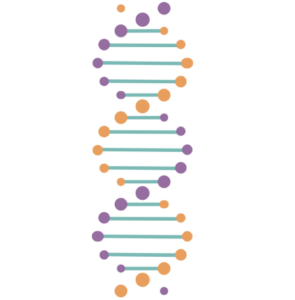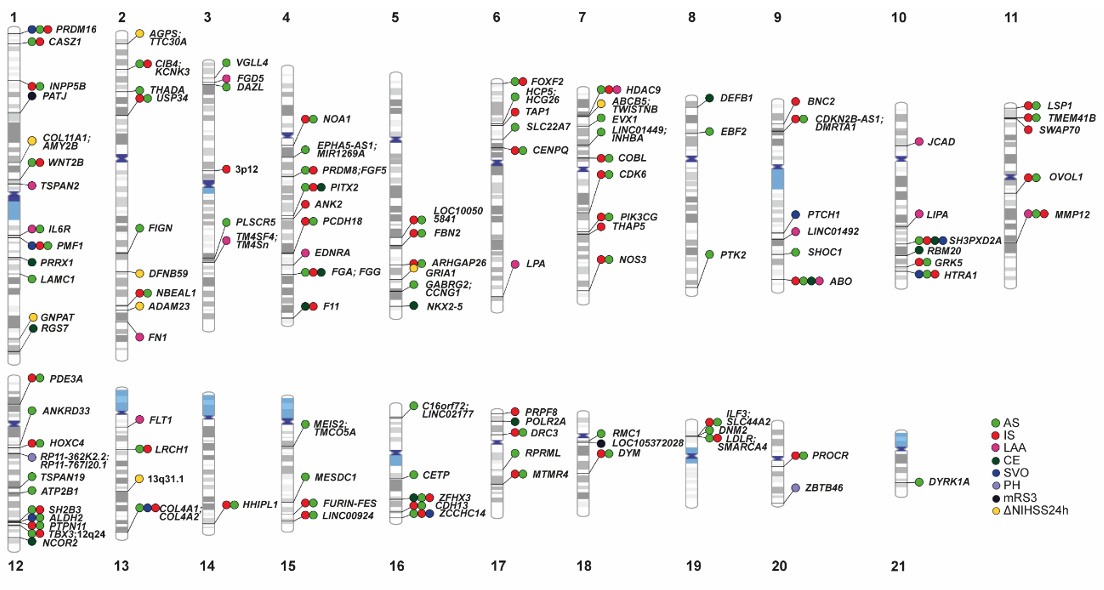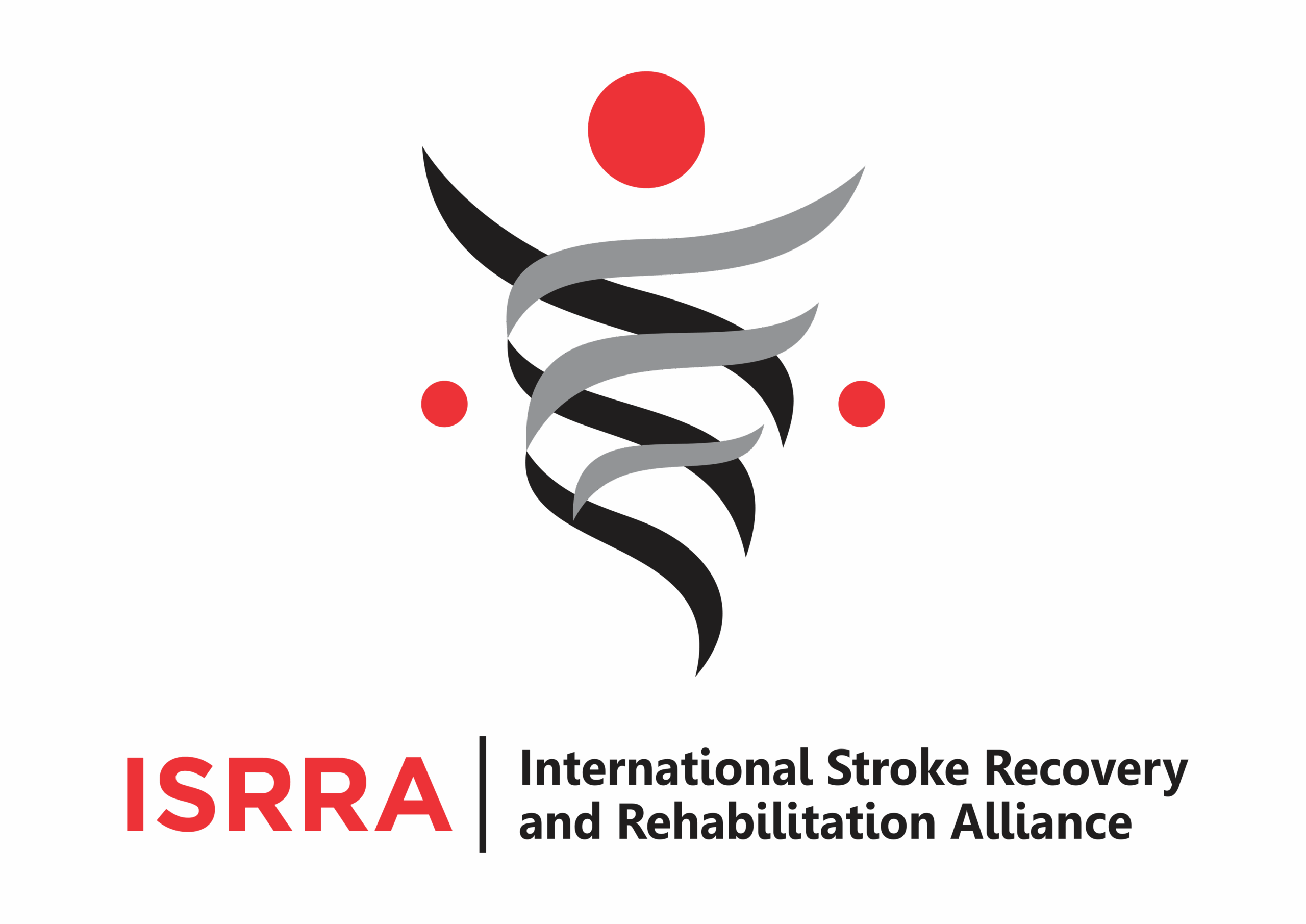L1 Stroke Risk and Stroke Outcome genetics

In the group of Pharmacogenomics and Neurovascular Genetics we are interested in finding the genetic risk factors associated with the risk of suffering a stroke, as well as those genetic risk factors associated with the evolution after suffering it.
To this end, we have more than 10 years of experience in the use of genome-wide association studies (GWAS). These are studies in which hundreds of thousands to millions of genetic variants are analyzed. This allows us to perform an unbiased analysis or without prior hypothesis, i.e., we analyze all those variants in order to find among the whole genome those regions that are really associated with the phenotype under study.
Following these strategies in the group we have developed different studies, as well as collaborations that have led to the discovery of a large number of genetic regions, marked in the following ideogram:

Ideogram of genomic regions influencing stroke phenotypes; colored circles represent genome-wide significant loci in published studies. Colors correspond to associated stroke phenotypes (green, AS: All Strokes [ischemic and hemorrhagic]; red, IS: Ischemic Strokes; pink, LAA: Large-artery atherosclerosis Stroke; dark green, CE: Cardioembolic Strokes; blue, SVO: Small Vessel Occlusion; purple, PH: Parenchymal Hematoma; black, mRS3: modified Rankin Scale three months after stroke; yellow, ΔNIHSS24h: the difference between NIH stroke scale (NIHSS) within six hours of stroke onset and NIHSS at 24 h. Prioritized genes in the original publications are displayed.
One of the strengths associated with GWAS studies is that in addition to allowing us to understand more about the disease and its associated phenotypes, the study does not end when we find a locus (associated genetic region). Rather, the discovery of these, leads to the identification of possible therapeutic targets. One of the well-known examples of success is the discovery by GWAS of the HDAC9 gene associated with ischemic stroke, which has allowed the development of HDAC9 protein inhibitor drugs that are used for the primary and secondary prevention of stroke in patients with high cholesterol levels.






